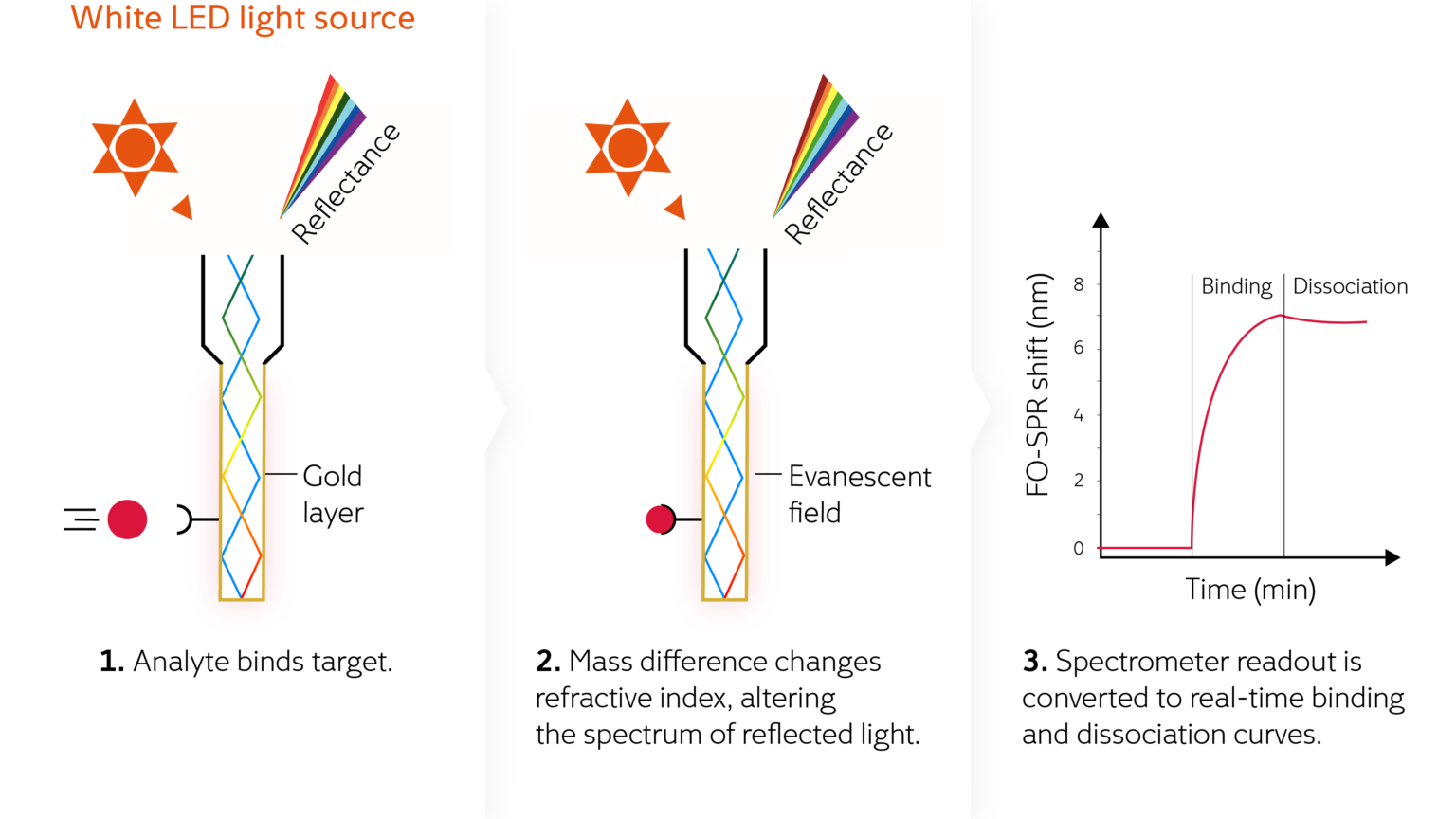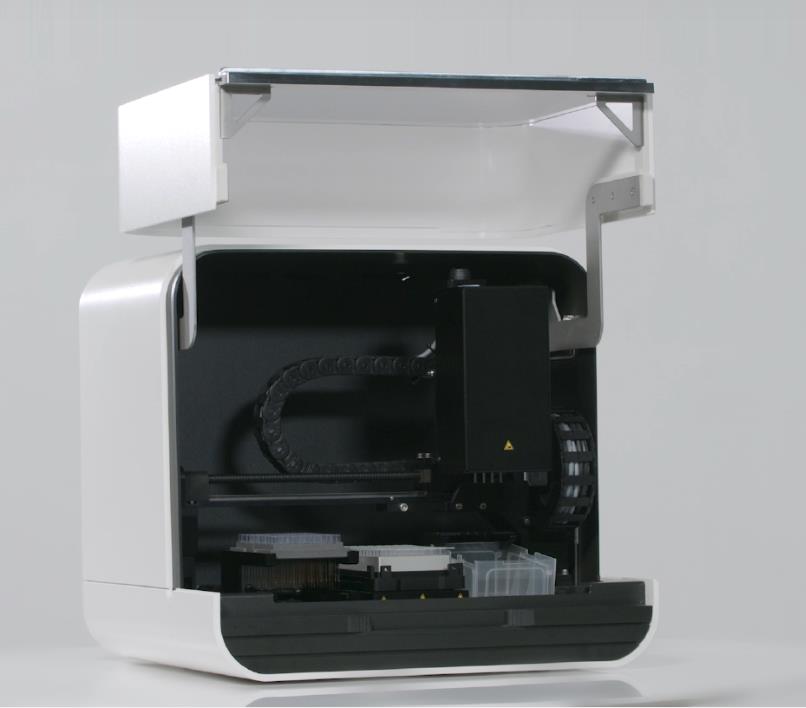Welcome to Dalian Leader Laboratory, a provider of laboratory solutions!
Service hotline: 0411-87307760
 中文
中文
Welcome to Dalian Leader Laboratory, a provider of laboratory solutions!
Service hotline: 0411-87307760
 中文
中文
About Fox Biosystems
The MeBioS Faculty of the University of Leuven in Belgium began research on surface plasmonic-resonance based fiber optic biosensing in 2006 and named it FO-SPR. Founded in 2017 by Filip Delport and Jeroen Lammertyn, FOx BIOSYSTEMS is a spin-off of MeBioS Academy. Fox Biosystems pushes the limits of bioanalysis to deliver powerful and sensitive fibre-based surface plasma biosensor instruments with a mission to transform the bioscience and pharmacological research markets with real-time, label-free analytical products.
Fox Biosystems offers a new fiber-optic-based surface plasmon resonance (FO-SPR) biosensor with an immersion fiber sensor, no microfluidic setup, and no clog risk. Without cleaning pipes, it is suitable for direct analysis of complex biological samples, and can accurately and quickly generate high-quality and cost-effective biomolecular interaction data, which has a wide range of applications. White FOx is an automated biomolecular interaction analysis and research platform developed based on fiber optic surface plasma technology.
Fox Biosystems product introduction
1. Principle of Optical fiber Surface Plasmon Resonance technology (Optical fiber SPR)
FOx BIOSYSTEMS uses a fiber probe inserted directly into the sample to perform biomolecular interaction analysis using the light SPR principle. In a White FOx instrument, SPR is achieved by coupling white light to a gold-plated fiber optic sensor probe. This probe, as a consumable, can sense changes in the refractive index of the matrix in the transient field (a region of 200nm from the outer surface) through changes in the internal reflected light received by the spectrometer. The change of reflected light over time is the real-time combination curve.
The probe can be easily immersed into the sample without the need for fluid Settings. This allows samples that can be purified by FOx technology to also be used in more complex substrates, such as plasma and blood, without the risk of tube blockage.
1. Principle of Optical fiber Surface Plasmon Resonance technology (Optical-fiber SPR)

Main features of White Fox instrument:
· Based on surface plasmon resonance (SPR) sensing principle
· The probe can be exchanged to facilitate the switch of operating protocols
· Compatible with PCR microplates and low volume PCR strips
· Four parallel sensing probes increase speed
· Required volume up to 140 μL
· Temperature control: ambient temperature to 40°C
· User-friendly software compatible with Windows 10
· Open data formats
·CE certification
Advantages of White Fox instruments:
· Easy to use immersion sensor
· High accuracy and speed of the SPR
· No fluid: no clogging, no need to clean
· Sensitivity: μM to nM (no label detection), pM to fM (gold nanoparticle sandwich detection)
· One device for multi-target detection: proteins, antibodies, nanobodies, complex particles, microvesicles, etc.
· Robust and flexible
· Get results quickly
· Reduce manual operation time
More economical than other SPR instruments In the White FOx instrument, SPR is achieved by coupling white light to a gold-plated fiber optic sensor probe. This probe, as a consumable, can sense changes in the refractive index of the matrix in the transient field (a region of 200nm from the outer surface) through changes in the internal reflected light received by the spectrometer. The change of reflected light over time is the real-time combination curve.
The probe can be easily immersed into the sample without the need for fluid Settings. This allows samples that can be purified by FOx technology to also be used in more complex substrates, such as plasma and blood, without the risk of tube blockage.

4, White FOx fiber probe
White FOx's immersion fiber probe can be customized and currently offers four surface chemical compositions for added convenience.
The customizable, interchangeable probe consists of gold-plated optical fibers with four different surface chemicals to choose from, allowing for binding to a range of proteins and biologics. These disposable probes are placed in White FOx as a semi-automatic analytical benchtop instrument for real-time analysis of biomolecular interactions.
The instrument uses the fiber-optic surface Plasmon resonance (FO-SPR) principle for labeled and label-free detection of biomolecules, including proteins, antibodies, nanomes, bacteriophages, complex particles, microvesicles, or cells of microliter volume. Within minutes, you can get accurate information about binding affinity, kinetics, or target concentration.
These interchangeable probes are available in four different styles, which means White FOx can detect different target molecules with the same device, giving you full flexibility. Four different surface chemical compositions allow the selection of suitable methods for bioassays, the probes can be transported and stored at room temperature, and can be regenerated for reuse after most assays.
Four probes include:
Carboxyl group: A general purpose surface chemical modification suitable for most applications
NTA: Used to fix His-tag proteins, facilitates nanosomes and recombinant proteins, and is ideal for library screening, allowing multiplication.
Streptavidin: Used to easily fix biotin-labeled proteins, antibodies, or peptides
Protein A: A universal surface for quantifying IgG, ideal for screening IgG library binding potency
5. Unique technical characteristics of White FOx products
Fiber surface plasmon resonance simplifies most bioanalytical applications with a wide selection of targets. Using a new fiber optic probe, White FOx combines a fluid-free immersion method with the precision and speed of surface plasmon resonance (SPR). This means that it can be used directly for the analysis of complex samples, such as lysates, whole blood or large particles. The probe can be easily switched so that a single device can be used to detect different target molecules, including antibodies, nanomes, microvesicles, phages, and more. Microfluid-free Settings, i.e. no clogging or cleaning required, and replaceable probes are available for a wide range of surface chemical compositions.
Fox Biosystem application
White Fox is mainly used in the study of biomolecular interaction, which can achieve labeling free quantification, labeling free binding kinetics, rapid sandwich detection, direct determination and quantification of crude samples, Biopanning, and the target substances can be antibodies, nanoparticles, proteins, extracellular vesicles, viruses, phages, etc. White FOx fiber optic biosensor instruments bring flexibility, control, and insight to diagnostic development, life sciences, and biological and pharmaceutical research.